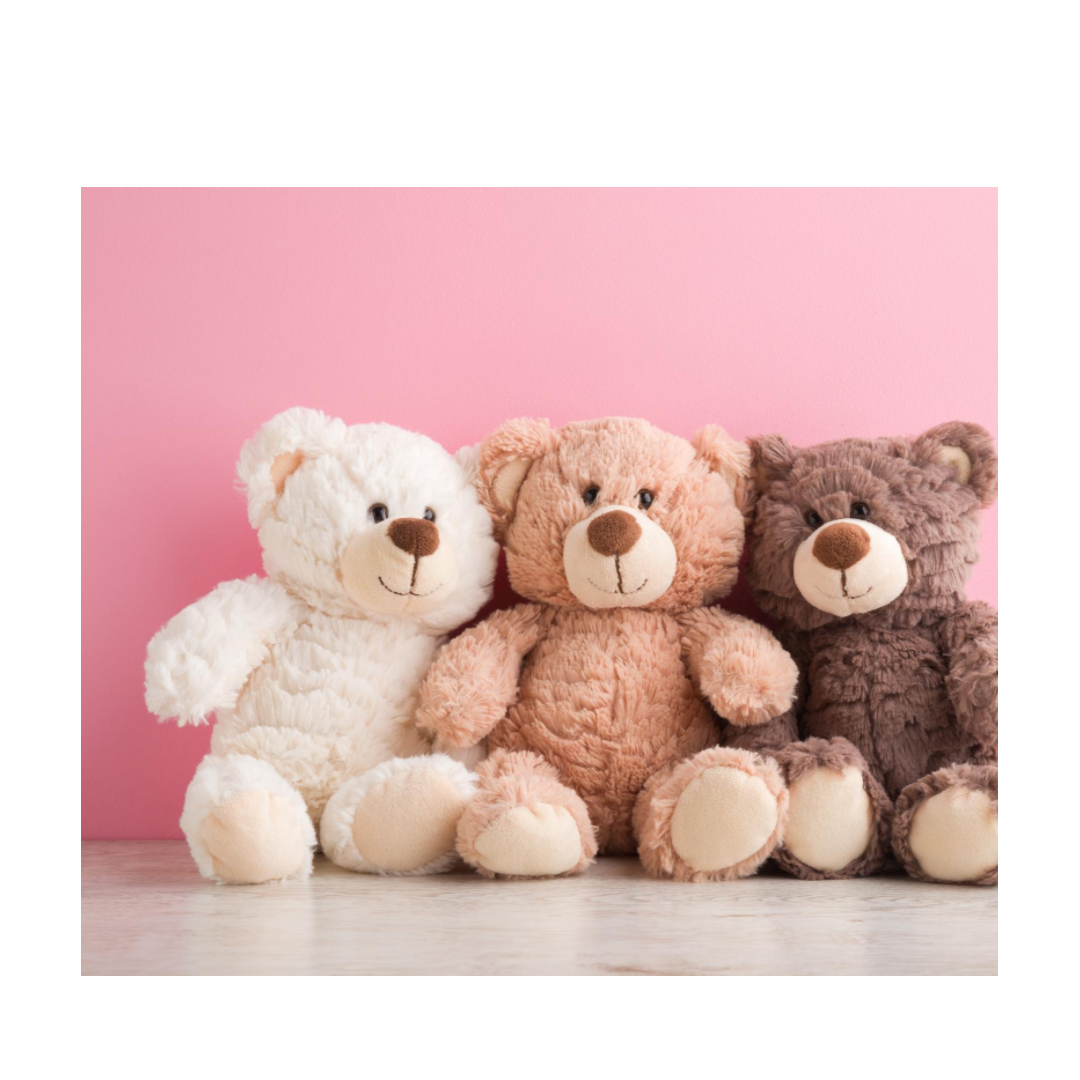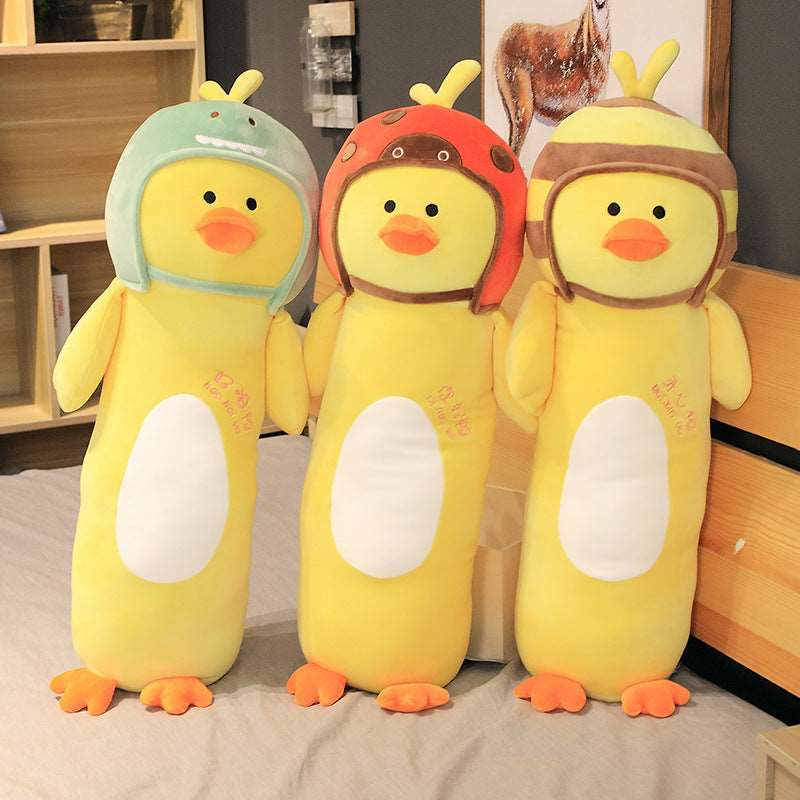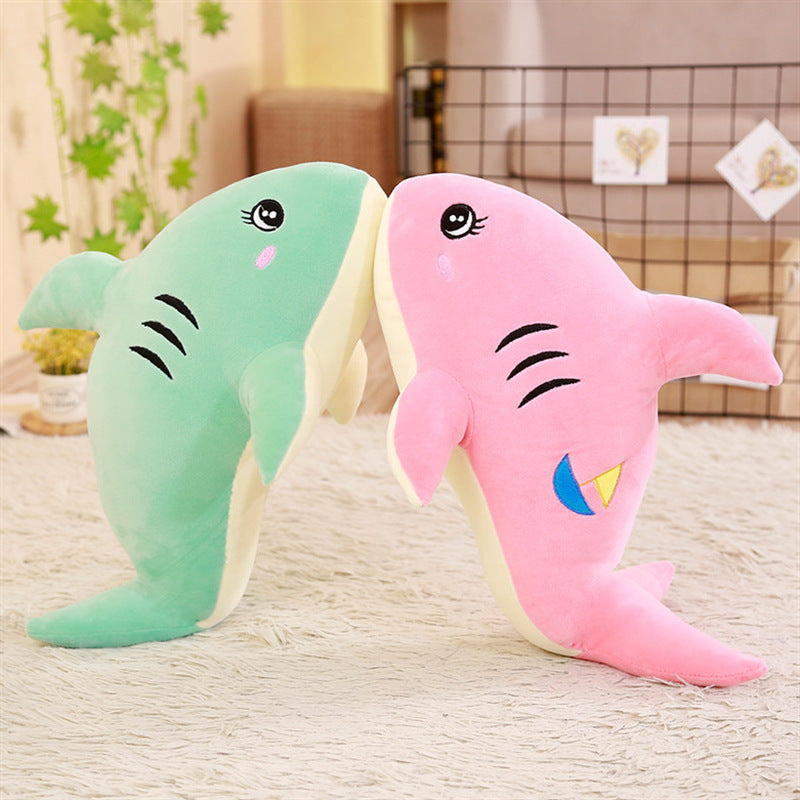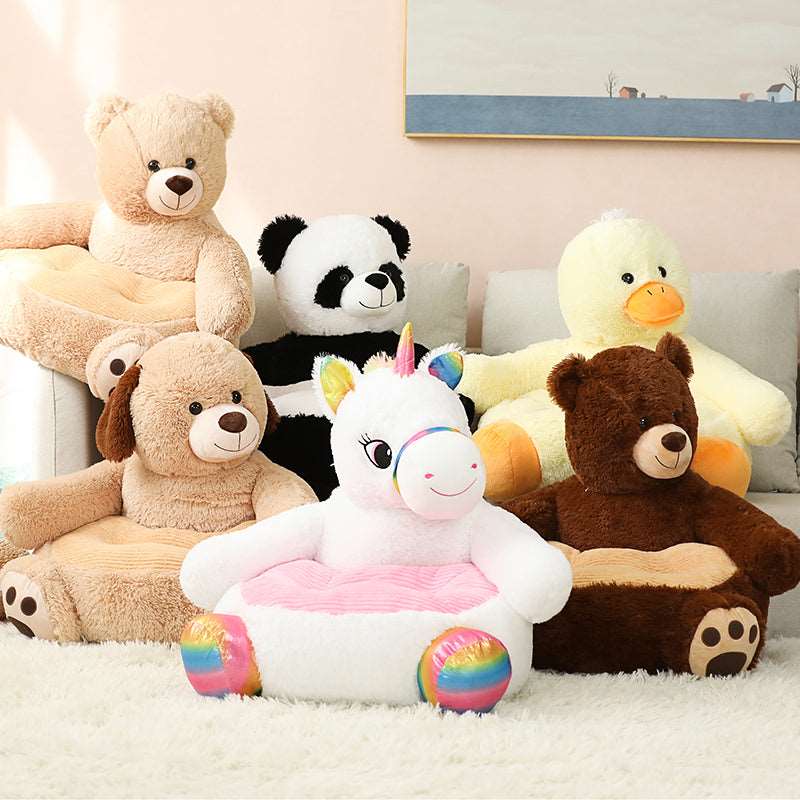

· By The Wakaii Team
Cleaning Plushies: Your Comprehensive Step-by-Step Guide
Stuffed toys are more than just playthings. They're confidants, comforters, and sometimes, they're even part of the family.
But just like any other member of the household, plushies need a good cleaning every now and then.
In this guide, we'll answer all your burning questions about washing your plushies and everything in between. So, let's dive right in!
Understanding Your Plushie
Before we get into the nitty-gritty of cleaning plush toys, it's important to understand what kind of plushie you have. Not all stuffed animals are created equal, and different types may require different care methods.
- Fabric Type: Plushies can be made from a variety of materials, including cotton, polyester, and even wool. The fabric type can affect how you should clean your plushie. For more info, check out our dedicated blog on the top 10 fabrics.
- Fill Material: The stuffing inside your plushie can also affect how you clean it. Some plushies are filled with plastic pellets or foam beads, which can melt or clump together if washed improperly. Others are stuffed with cotton or synthetic fibers, which are generally safe to machine-wash.
Remember, the best way to know how to care for your plush toy is to check the care label. This should give you specific instructions on how to wash and dry your plushie.
If your plushie doesn't have a care label, or if the label is faded or unreadable, don't worry! We've got you covered with general cleaning tips that should work for most plushies.

Pre-Cleaning Considerations
Before you start the cleaning process, there are a few things you should do:
- Check for damages: Look over your plushie for any rips, tears, or loose parts. If you find any, it's a good idea to repair them before cleaning to prevent further damage.
- Remove accessories: If your plushie has any removable parts, like clothing or batteries, take them off before cleaning. This will make the cleaning process easier and prevent damage to these parts.
- Pre-treat stains: If your plush toy has any visible stains, it might be necessary to pre-treat them before the main wash ( same method as spot cleaning below )
Cleaning Methods for Plushies
Depending on your plushie's care instructions and the type of dirt or stain, you might choose one of the following methods:
Machine Washing
Machine washing can be a great way to clean your plushies, especially if they're made of durable materials like polyester, unlike rayon plush, mohair, wool and alpaca fur which are not to be washed in a machine.
To machine wash your plushie, follow these steps:
- Place the plushie in a pillowcase or laundry bag to protect it during the wash.
- Use a gentle cycle and cold water to prevent damage to the fabric and colors.
- Use a mild detergent. Avoid using bleach or fabric softeners as they can damage the plushie's fabric and stuffing.
The washing process should effectively remove any bacteria or virus on the surface.

Hand Washing
If your plushie isn't machine-washable, or if you prefer to wash by hand, hand washing is a great option. This involves gently cleaning your plushie in a basin or sink using a mild detergent.
Here's how to do it:
- Fill a basin or sink with cold water and add a small amount of mild detergent.
- Gently agitate the water to create suds.
- Place the plushie in the water and gently squeeze it to absorb the soapy water.
- Rinse thoroughly under cold water until all the soap is gone.
- Gently squeeze out the excess water. Avoid wringing or twisting the plushie as it can damage the shape and stuffing.

Spot Cleaning
For minor spills or stains, spot cleaning is a quick and easy solution. This method is essentially a quick way to clean your plushie without washing it completely. Here's how:
- Mix a small amount of mild detergent with cold water.
- Dip a clean cloth or sponge in the solution and wring out the excess water.
- Gently blot the stain with the damp cloth. Avoid rubbing as it can spread the stain or damage the fabric.
- Rinse the area with a cloth dipped in clean water.
- Pat the area dry with a towel and let it air dry.
Be careful if you're spot cleaning an electronic plushie, as moisture can potentially damage the electronic parts.
Deep Cleaning Older or Antique Plushies
Antique plushies or older stuffed toys often require special care when cleaning.
They may be made from delicate materials or have aged stuffing that could be damaged by water or harsh detergents. Here's how to clean antique stuffed animals:
- Dust off the plushie: Use a soft brush to gently remove any surface dust or dirt.
- Spot clean: If there are any visible stains, try spot cleaning first. Use a mild detergent and a soft cloth to gently clean the stained area.
- Dry clean: If the entire plushie needs cleaning, consider taking it to a professional dry cleaner who specializes in stuffed toys. They have the knowledge and equipment to clean your antique plushie without damaging it.
Always test any cleaning method on a small, inconspicuous area first to ensure it won't damage the fabric or colors.

Sterilizing Plush Toys
To sterilize your plushie, especially after exposure to germs or bacteria, you can follow these methods:
- Machine Wash: If the plushie is machine-washable, use a hot water cycle with a disinfectant laundry detergent. This is the simplest method for sterilization.
- Disinfectant Spray: Use a fabric-safe disinfectant spray on the plushie, then let it air dry. This method is ideal for plushies that can't be machine washed.
- Garment Steamer: A garment steamer can kill viruses and dust mites on the toy with its high heat. Be careful not to damage the toy's fur.

Cleaning Plushies with Electronics
Stuffed animals with electronics can't be washed in a machine or submerged in water. But don't worry, they can still be cleaned! Here's how to clean stuffed animals with electronics:
- Remove the batteries: Before you start cleaning, make sure to remove the batteries from the toy.
- Wipe the surface: Use a damp cloth to wipe the surface of the toy. You can use a mild detergent if needed.
- Spot clean: If there are any stains, use a soft cloth and a mild detergent to gently clean the stained area.
- Dry the toy: Use a dry towel to remove any excess moisture, then let the toy air dry completely before replacing the batteries.
Note: Never submerge a plush toy with electronics in water, as it can damage the electronic components.
Drying Methods for Plushies
Once your plushie is all clean, it's time to get it dry. But wait! Don't just reach for the nearest towel. The drying process is just as important as the cleaning process when it comes to caring for your plushies. Here are a few methods you can use:
Air Dry
Air drying is the most gentle method and is great for plushies made of delicate materials or those with embellishments that could be damaged by heat.
- Lay your plushie on a clean towel: After washing, place your plushie on a clean, dry towel.
- Let it dry naturally: Allow your plushie to air dry. This is the safest and most gentle method to dry your plushies.
- Turn it over occasionally: Make sure to turn your plushie over every now and then to ensure it dries evenly.
Tumble Dry
Tumble drying is a quicker method that's suitable for plushies made of durable materials.
However, it's important to use the lowest heat setting on your dryer and to check the plushie's care label to ensure it can be tumble dried.
- Check the care label: Before tumble drying, make sure the care label says it's safe.
- Use the lowest heat setting: Set your dryer to the lowest heat to prevent damage.
- Protect your plushie: Consider putting the plushie in a pillowcase or laundry bag for extra protection during the tumble drying process.
Hair Dry
Hair drying is a fast method that can be used when you need to dry a plushie quickly. This method should be used with caution, as high heat can damage certain materials.
- Set your hairdryer to the coolest setting: High heat can damage the fabric or melt any plastic parts.
- Keep the hairdryer moving: Don't focus the hairdryer on one spot for too long. Keep it moving over the plushie to prevent overheating.
- Maintain a safe distance: Hold the hairdryer at a safe distance from the plushie to prevent damage.
Remember, always check the care label on your plushie before choosing a drying method. When in doubt, air drying is the safest bet.
Caring for Your Plushies Post-Cleaning
Once your plushie is clean and fresh, you'll want to keep it that way as long as possible. Here are some tips for caring for your plushies post-cleaning:
- Store them properly: Keep your plushies in a clean, dry place. Avoid damp areas, as they can encourage mold growth.
- Avoid food and drinks: Try to keep plushies away from food and drinks to prevent spills and stains.
- Regular cleaning: Regularly dust your plushies and do spot cleaning as needed to keep them looking their best.
Regular care and maintenance can extend the life of your plushies and keep them looking great!
Wrapping Up
And there you have it folks! I hope I made this process just a little easier and simpler for you.
Remember, the key is to use gentle methods and products to avoid damaging your plushies.
And hey, if you're looking for more adorable plushies to add to your collection, don't forget to check us out!
And before you go, don't you forget to subscribe to our newsletter. You'll even get 15% off your next order!
Cheers!
FAQs
Yes, it is generally safe to wash plushies. Machine wash on gentle with mild detergent if possible. For delicate or non-machine washable plushies, spot clean or hand wash.
If your plushie gets stained, don't panic! You can often remove stains by gently spot cleaning the affected area using a mild detergent or stain remover. Make sure to test the cleaning solution on a small, hidden area first to avoid damaging the plushie's fabric.



